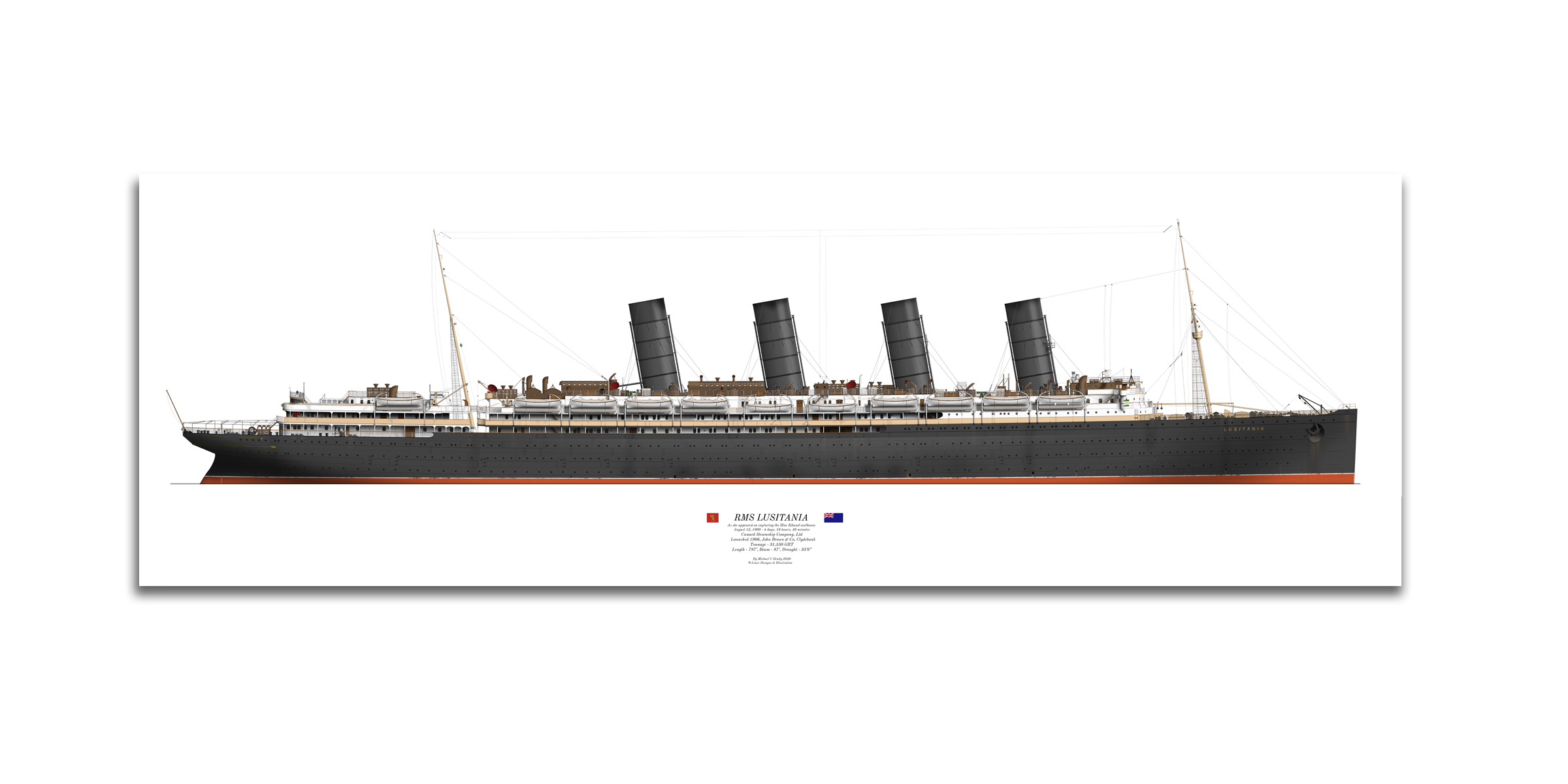RMS LUSITANIA
Illustrations by Michael C Brady, 2020
THE ATLANTIC GREYHOUND
Lusitania was both the largest and fastest ship in the world when she was introduced in 1907. Her interiors were the very last word in luxury, and alongside her sister Mauretania she became a beloved fixture of the transatlantic fleet. Tragically she was lost in 1915 when torpedoed by an Imperial German submarine with great loss of life.
RMS LUSITANIA
LENGTH: 787’
BEAM: 87’
DRAUGHT: 33’6”
TONNAGE: 31,550 GRT
MAX SPEED: 28 kn
July 1907 - The Sea Trials
Delivered to Cunard in July 1907, Lusitania had been built in Scotland at John Brown and Co, earning her the nickname "‘The Scottish Ship”. (Mauretania, her sister and running-mate, was constructed in England at John Wigham Richardson.) This drawing depicts Lusitania on July 29, 1907 when she began three days of intensive sea trials; brand-new, and with her handsome but short-lived original paint-scheme.
SEPTEMBER 1907 - THE MAIDEN VOYAGE
On Friday 13 September, 1907, Lusitania steamed into New York Harbour for the first time to be greeted by hundreds of thousands of jubilant Americans. Photographs show her proudly flying decorative signal flags from her masts as she headed for Cunard’s Pier 56 for the first of over one hundred future arrivals.
JULY 1909 - THE BLUE RIBAND
Although Lusitania did not break a crossing record on her maiden voyage, future crossings proved far more successful for the sleek Cunarder. In August 1909, after having had new four-bladed propellers installed, she recorded her fastest westbound crossing; four days, sixteen hours and fourteen minutes.
MAY 1915 - THE WAR
The outbreak of war was calamitous to the transatlantic trade but Lusitania continued to operate as a passenger liner relying on her great speed for safety. Her good fortune finally ran out on May 7, 1915 when a torpedo - fired by German submarine U-20 - struck her on the starboard bow. The impact was a death-blow; within 20 minutes the great Cunarder was gone along with 1,198 lives.
















